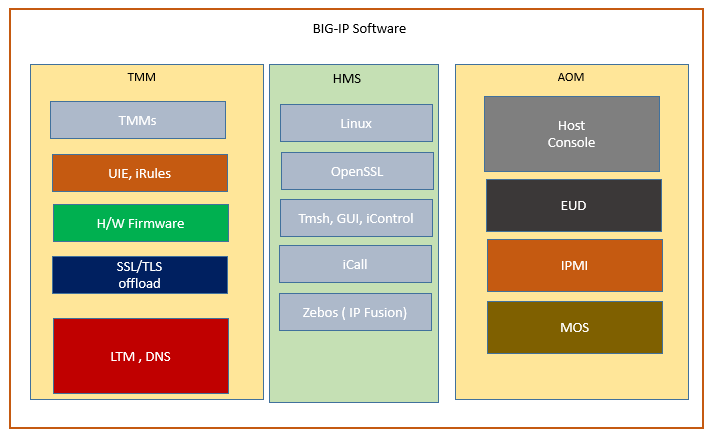EMAIL SUPPORT
dclessons@dclessons.comLOCATION
USBIG-IP F5
In this BIG-IP F5 LTM Training , you will learn all deep dive concepts related to BIG-IP F5. This course will give opportunity to learn all BIG-IP F5 Hardware Product Architecture , its models and traffic Processing.
This BIG-IP F5 LTM Training Course enables you to have complete knowledge about LTM and its feature but also helps you to prepare for BIG-IP F5 TMOS Administrator Exam.
In this you will also learn to configure BIG-IP F5 feature set, Load balancing Method , Monitors , iRules etc. This is the Best BIG-IP F5 LTM LABS, that has been designed in such a way that, it includes not only theory but also traffic flow of each related topics associated to LAB.
Course Pedagogy
The Course Pedagogy will help you to learn the following concepts on BIG-IP F5 hardware Platform.
- Introduction to BGI-IP Hardware Platform
- How to Provision BIG-IP LTM box
- How to Configure and use BIG-IP Object and Load Balancing Method
- Learn about BIG-IP F5 Persistence & Types
- How to use BIG-IP F5 Monitors
- BIG-IP F5 Profile Concepts
- Learn BIG-IP F5 SNAT
- How to Configure BIG-IP F5 iRules
- BIG-IP F5 LTM labs
BIG-IP F5 is the ADC (Application Delivery Controller), which is mainly used in Load balancing the application traffic, and comprised of other features such as Virtual Edition Container, TMOS, and TMM and comes with various other modules to achieve specific tasks.
We will see what other separate modules it comes with shortly.
Understanding BIG-IP Hardware Architecture
Big-IP Hardware comprised of several various hardware elements and their purpose are discussed below:
Traffic Management Microkernel (TMM):
- It is the traffic management hardware component and has following features:
- Contains L2 Switch module with NICs
- Contains dedicated SSL Encryption or FIPS Hardware
- Contains dedicated compression hardware
- Contains Packet velocity ASIC or embedded Packet Velocity ASIC (ePVA) using FPGAs (Field Programmable gate Arrays)
- TMM Uses all CPU and almost RAM, however a small amount of RAM is also shared with HMS.
TruboFlex™:
This Hardware element is only present in F5 iSeries ADC. It Provides FPGA features along with a pre-packaged optimization which user can select. It also contains some free CPU to complete other task.
Host Management Subsystem (HMS):
This Hardware component runs a version of CentOS (Community Enterprise Operating system) Linux which also include SELinux.
HMS is mainly used for system management, administration function. It uses a single CPU (shared with TMM) and also uses a shared RAM.
Always On Management:
It provides ‘light out ‘Management of the HMS, via a dedicated management processor as well as layer 2 switch management.
Baseboard Management Controller (BMC):
This Controller has separate dedicated controller that is independent of primary TMM and HMS components. Due to which it is useful in providing Out of Band Management and Monitoring.
Below is the BIG-IP Hardware Architecture which has been discussed above

Understanding BIG-IP Software – TMOS
TMOS is traffic Management Operating System, This TMOS is used for all F5 Network traffic and not for Data traffic.
Below are the primary software element of BIG-IP known as TMOS.
TMM: (Traffic Management Microkernel Software):
- It Contain software in form of Operating and support following feature like System , LTM iRules , proxies, FastL4, fastHTTP, fast Application proxy, TCPExpress, IPV4,IPV6.
- Software to support firmware which operates dedicated SSL , other cards and hardware
- Supports Interface to connect HMS
TurboFlex FPGA Firmware
HMS:
- This HMS version of software contains modified version of CentOS.
- It has rich tools and interface to manage system like WebGUI, tmshCLI, DNS Client, SNMP, NTP.
Local Traffic Manager (LTM):
When we license each module like LTM, GTM, APM, ASM, these Module uses TMM to perform each specific tasks.
AOM:
This Software provides, Light out system management, which is accessible from Management network interface and Serial Console.
Intelligent Platform Management Interface (IPMI):
- This is the hardware level interface specification and protocol supported by BIG-IP iSeries Hardware.
- It provides out of band monitoring & management of system, even though BIG-IP does not have an operating system and also when system is off.
- This is Accessed by Management network Interface and Serial Consol.
Maintenance Operating System (MOS): It provides disk management, File System Mounting, and Maintenance.
Below is the BIG-IP System Software Architecture which is discussed in above section.

Note: ( Refer before Purchase )
- We don't offer Any Hands-On labs for practice in this course.
- Lab discussed here contains different Scenarios, task & Its recorded Solutions.
- Content of each page is 30-40% visible for Customer verification about content.
- Before any purchase , verify content then proceed ,No refund Policy.
- For More Detail : Mail dclessons@dclessons.com , FAQ & TC page.




LEAVE A COMMENT
Please login here to comment.